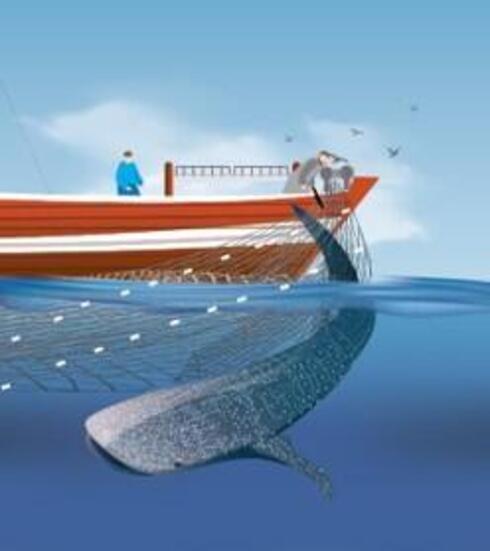The Project
WWF is encouraging Pakistan’s national fleet of gillnet vessels to modify how crews fish with this gear to mitigate the negative ecological impact. The modification is simple and inexpensive: crew members just place their gillnets approximately 6 feet below the water’s surface to reduce entanglement rates of bycatch species.
Additionally, more than 100 skippers have been trained on how to correctly identify different cetacean, turtle, shark, and ray species, and then how to safely release them back into the ocean. The crews are also equipped to record and report data on their tuna catch and bycatch species entanglement rates.
WWF is partnered with scientists from Florida National University to process this data and build the evidence base for effective fishing and bycatch mitigation policy setting in the region.
The Results
Pilot tests revealed that by placing gillnets deeper underwater, the entanglement rate of cetaceans decreased by 80-85% and vessels reported a 30-40% increase in their catch of tuna with each haul.
Improved data collection and bycatch mitigation actions mean that Pakistan can now comply with resolutions established under the Indian Ocean Tuna Commission (IOTC), the tuna management and conservation organization for the region. The activities under the project have improved Pakistan’s compliance with IOTC decisions from 6% in 2015 to 55% in 2018.
In late 2019, for the first time ever, the Government of Pakistan hosted the IOTC’s annual scientific committee meeting, as well as another meeting on data collection and statistics. This leadership is a signal of the country’s stated commitment to be a collaborative and engaged member of the IOTC moving forward.

